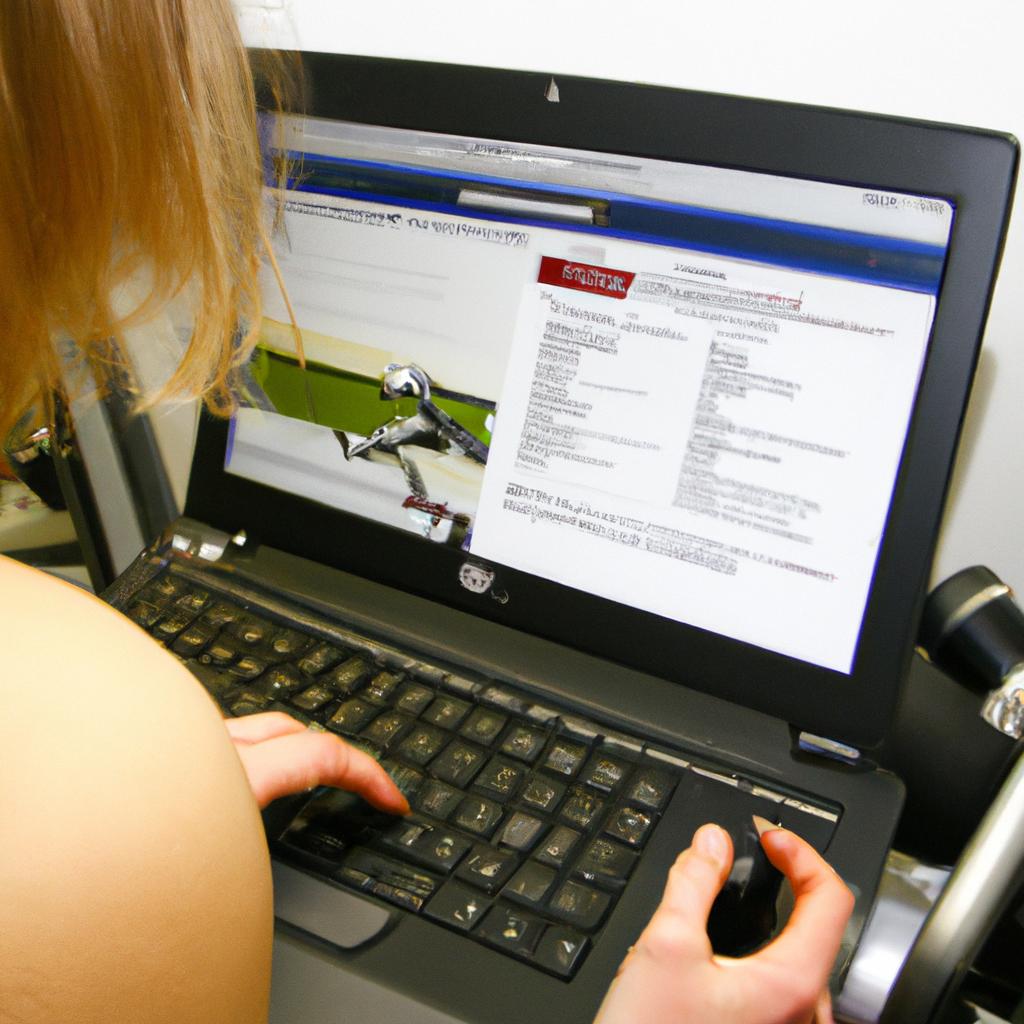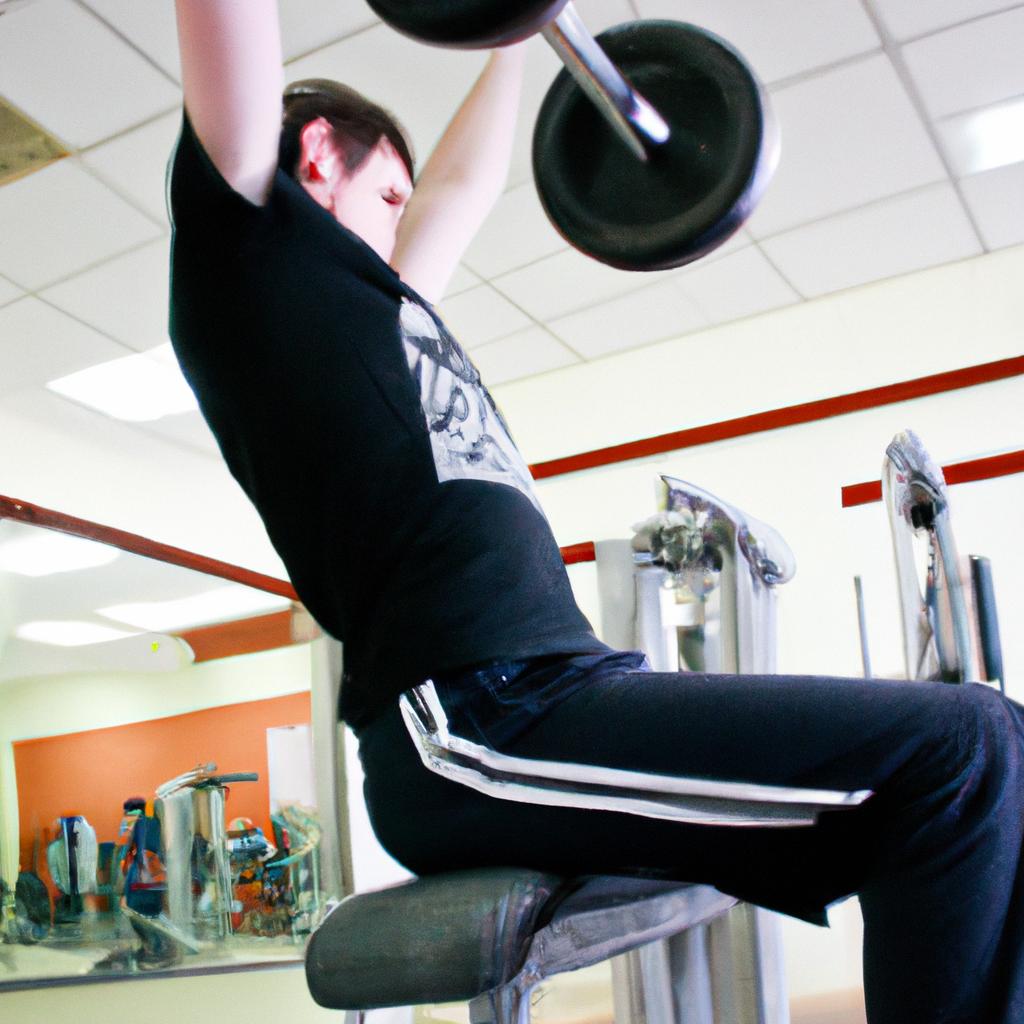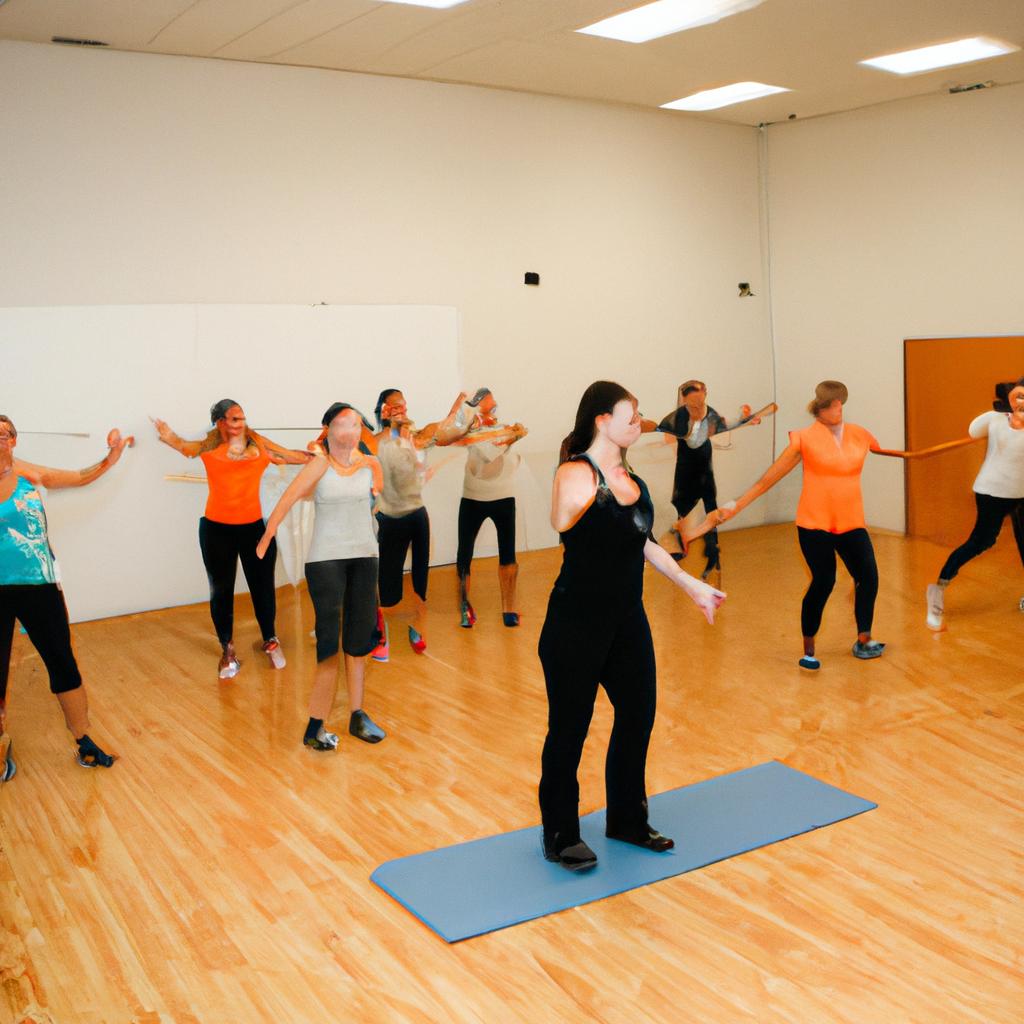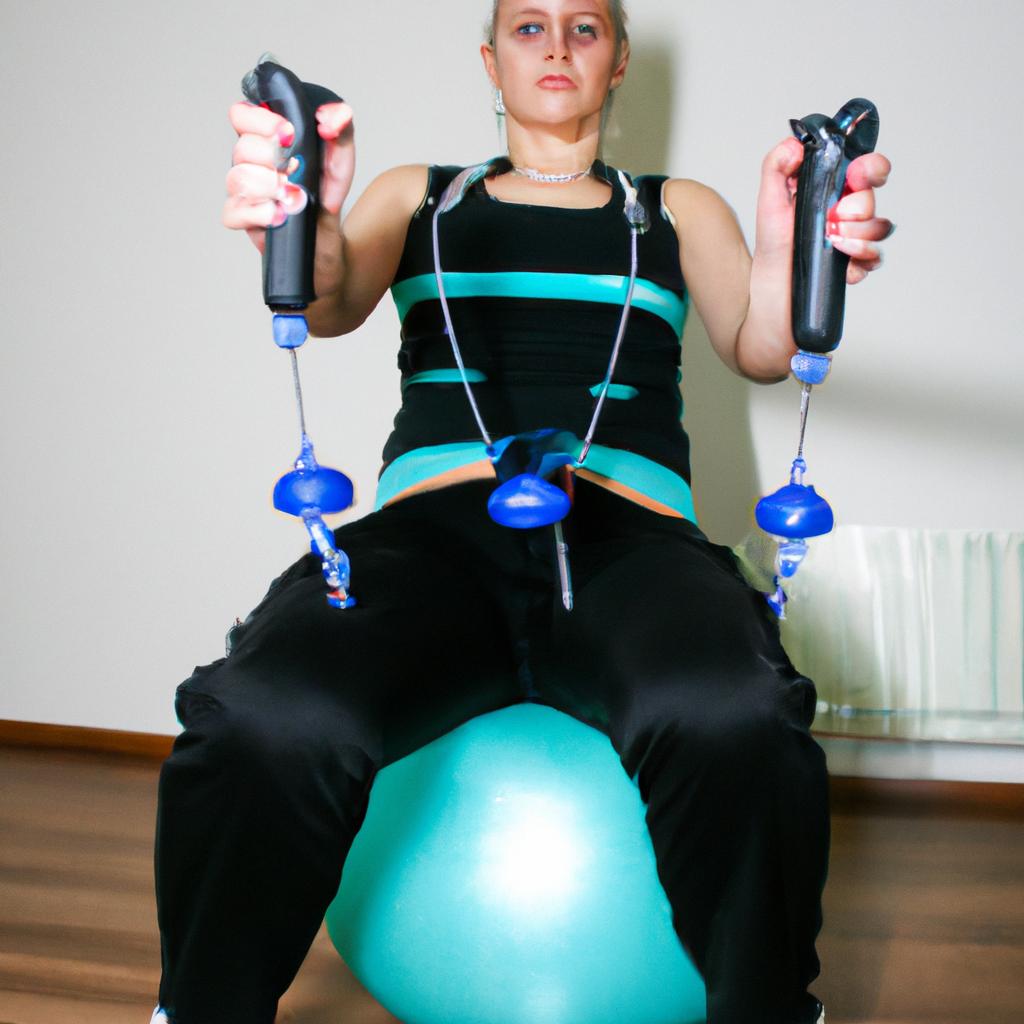The fitness industry has experienced significant growth in recent years, with more individuals prioritizing their health and wellness. As a result, the demand for fitness studios has surged, prompting entrepreneurs to invest in this profitable sector. However, establishing a successful fitness studio requires careful planning and financial considerations, particularly when it comes to acquiring suitable fitness equipment. This comprehensive guide aims to provide an overview of the various funding options available for fitness equipment purchases, enabling fitness studio owners to make informed decisions that align with their business objectives.
Consider the case of FitLife Fitness Studio*, a startup located in a bustling urban area. The studio’s owner recognized the need for top-notch equipment to attract clientele and deliver high-quality workouts. With limited initial capital, securing funds for purchasing state-of-the-art fitness equipment seemed like an insurmountable challenge. Thus began an extensive research process into different funding avenues specifically tailored for financing fitness equipment acquisitions. By exploring these options thoroughly and assessing their feasibility against budget constraints and long-term goals, FitLife Fitness Studio successfully procured the necessary equipment without compromising on quality or its financial stability.
In light of such success stories as well as challenges faced by many aspiring gym owners, understanding the various methods of funding becomes crucial when embarking on the establishment or expansion of a fitness studio. Whether you are a new entrepreneur or an existing fitness studio owner looking to upgrade your equipment, here are some common funding options to consider:
-
Self-Funding: If you have personal savings or access to funds, using your own capital is often the simplest and most straightforward option. Self-funding allows you to retain full ownership and control over your business while avoiding interest payments or additional debt.
-
Bank Loans: Traditional bank loans are a popular choice for financing fitness equipment purchases. Banks typically offer competitive interest rates and flexible repayment terms based on your creditworthiness and business plan. Prepare a solid business plan highlighting the potential profitability of your fitness studio to increase your chances of securing a loan.
-
Equipment Leasing: Leasing offers an alternative solution for acquiring fitness equipment without a large upfront payment. With leasing, you make regular monthly payments over a set period while having access to the equipment immediately. At the end of the lease term, you can choose to return the equipment, renew the lease, or purchase it at a predetermined price.
-
Equipment Financing: Similar to leasing, equipment financing allows you to acquire fitness equipment by making fixed monthly payments over time. However, unlike leasing where you don’t own the equipment, with financing, you eventually gain ownership once all payments have been made.
-
Crowdfunding: Crowdfunding platforms allow you to raise funds from a large number of people who believe in your business idea. Create an engaging campaign showcasing your fitness studio concept, goals, and rewards for contributors. It’s important to market your campaign effectively through social media channels and engage with potential backers.
-
Grants and Sponsorships: Research local government grants or non-profit organizations that provide funding specifically for small businesses or health-related initiatives like fitness studios. Additionally, seek out potential sponsorships from companies aligned with wellness or fitness brands that may be interested in supporting your studio financially in exchange for exposure and marketing opportunities.
-
Partnerships and Investors: Consider forming partnerships or seeking investors who are interested in the fitness industry. This option allows you to share the financial burden while benefiting from their expertise and network. Ensure you have a well-defined partnership agreement or investor agreement in place to protect both parties’ interests.
When evaluating these funding options, carefully assess their terms, interest rates, repayment schedules, and impact on your overall financial stability. It’s essential to create a detailed budget that includes not only the cost of equipment but also other expenses like maintenance, insurance, and marketing. Moreover, consult with finance professionals or experts experienced in the fitness industry to gain additional insights and guidance tailored to your specific situation.
By understanding and exploring these various funding avenues, you can make informed decisions that align with your business objectives, ensuring the success and longevity of your fitness studio.
Determining Your Fitness Studio’s Equipment Needs
To effectively establish a fitness studio, it is essential to carefully assess and determine the equipment needs that will cater to your target audience. One way to approach this task is by considering a hypothetical case study of a new boutique fitness studio targeting young professionals in an urban setting. By examining their specific requirements, we can gain valuable insights into the various factors involved in determining equipment needs.
Firstly, understanding the demographics and preferences of your potential clients plays a pivotal role in selecting suitable fitness equipment. In our case study, research reveals that the target market consists primarily of individuals who value diversity in their workouts and seek innovative exercise options. This insight suggests that incorporating versatile equipment such as adjustable dumbbells or resistance bands could meet their diverse workout preferences while maximizing space utilization within the studio.
Additionally, creating an emotionally engaging environment should be at the forefront of every fitness studio owner’s mind. Using markdown format bullet points below, let’s explore four key considerations when choosing equipment:
- Safety: Prioritize safety features for all equipment to ensure injury prevention.
- Quality: Invest in high-quality machines and materials that withstand frequent usage without compromising functionality.
- Durability: Select durable equipment capable of withstanding heavy use over time.
- Aesthetics: Consider visually appealing designs that align with your brand image and create a positive atmosphere.
Furthermore, organizing information using tables can help us visualize different aspects related to equipment selection. Below is a three-column table displaying types of popular gym equipment alongside their benefits and drawbacks:
| Type of Equipment | Benefits | Drawbacks |
|---|---|---|
| Treadmills | Excellent cardiovascular exercise | High initial cost |
| Free weights | Versatile for strength training | Requires proper technique for safe use |
| Stationary bikes | Low impact on joints | Limited upper body engagement |
| Resistance bands | Portable and versatile | May not provide the same resistance as traditional weights |
In conclusion, when determining your fitness studio’s equipment needs, it is crucial to consider factors such as target audience preferences, safety, quality, durability, aesthetics, and functionality. Understanding these aspects will guide you in selecting suitable equipment that caters to your clients’ diverse workout requirements while creating an engaging environment. In the subsequent section, we will explore different types of fitness equipment for your studio.
Moving forward into the subsequent section about “Different Types of Fitness Equipment for Your Studio,” let us delve deeper into specific options that can effectively meet your clientele’s fitness goals.
Different Types of Fitness Equipment for Your Studio
Once you have established the goals and vision for your fitness studio, it is crucial to determine the equipment needed to bring that vision to life. Let’s consider a hypothetical case study of a new fitness studio specializing in high-intensity interval training (HIIT). The goal of this studio is to provide clients with state-of-the-art equipment that caters specifically to their HIIT workouts.
To ensure that your fitness studio meets the needs of its target audience, consider the following factors when determining the equipment requirements:
-
Workout Variety: It is important to offer a wide range of exercise options to cater to different preferences and abilities. This may include cardio machines such as treadmills and stationary bikes, strength-training equipment like dumbbells and resistance bands, as well as functional training tools like kettlebells and medicine balls.
-
Space Efficiency: Maximize your available space by selecting compact yet versatile equipment. Opt for adjustable benches or multi-functional machines that allow users to perform various exercises in one station, saving both space and money.
-
Durability and Safety: Invest in high-quality equipment that can withstand frequent use without compromising safety. Look for products with solid construction, ergonomic designs, and features such as non-slip surfaces or built-in safety mechanisms.
-
Technology Integration: In today’s digital age, incorporating technology into fitness routines has become increasingly popular. Consider including equipment with interactive displays or connectivity features that enable clients to track their progress or access online workout programs.
These considerations will help guide you in choosing suitable fitness equipment tailored to your studio’s unique offerings. To further illustrate these points visually, let’s take a look at an example table highlighting some essential types of fitness equipment along with their respective benefits:
| Type of Equipment | Benefits |
|---|---|
| Treadmill | Enhances cardiovascular endurance |
| Dumbbells | Facilitates strength-building exercises |
| Suspension Trainer | Promotes functional training and core stability |
| Rowing Machine | Provides a full-body workout with low impact on joints |
Now that we have explored the various factors involved in determining your fitness studio’s equipment needs, it is essential to delve into understanding the costs associated with acquiring this equipment. By gaining insight into the financial considerations, you can ensure an effective budgeting strategy for your fitness studio.
Understanding the Costs Associated with Fitness Equipment
Let’s take a closer look at the costs associated with fitness equipment for your studio. To illustrate this, we will consider a hypothetical case study of Studio X, a popular fitness studio that recently expanded its facilities and needed to invest in new equipment.
Studio X identified several types of fitness equipment they required to cater to their diverse clientele. These included treadmills, weight machines, stationary bikes, and free weights. Each piece of equipment came with its own price tag, ranging from hundreds to thousands of dollars. It was essential for Studio X to carefully evaluate the costs involved before making any purchasing decisions.
To provide you with an overview of these costs, here are some key considerations when budgeting for fitness equipment:
- Initial purchase cost: This includes the actual price of the equipment itself. For example, high-quality treadmills may range from $1,000 to $5,000 per unit.
- Maintenance expenses: Regular maintenance is crucial to ensure optimal performance and longevity of the equipment. This involves routine inspections and repairs if necessary. On average, maintenance costs can amount to 10% – 15% of the initial purchase cost annually.
- Upgrades and replacements: Over time, certain pieces of equipment may become outdated or experience wear and tear beyond repair. Budgeting for future upgrades or replacements is vital to keep up with industry trends and maintain a safe environment for clients.
- Miscellaneous expenses: Additional costs such as delivery fees, installation charges, warranties, and spare parts should also be factored into your overall budget.
Consider the following table showcasing estimated costs for different types of fitness equipment based on market research:
| Type | Average Cost Range ($) |
|---|---|
| Treadmills | $1,500 – $4,500 |
| Weight Machines | $2,000 – $6,000 |
| Stationary Bikes | $1,000 – $3,500 |
| Free Weights | $200 – $800 |
As you can see, the cost of fitness equipment can vary significantly depending on the type and quality. It is crucial to conduct thorough research, compare prices from different suppliers, and consider your studio’s specific needs before making any financial commitments.
Understanding the costs associated with fitness equipment allows you to create a realistic budget for your studio. Transitioning into our subsequent section about exploring funding options:.
With an understanding of the costs involved in acquiring fitness equipment for your studio, it is essential to explore various funding options that can support your investment.
Exploring Funding Options for Your Fitness Studio’s Equipment
Imagine a fitness studio owner named Sarah who is determined to equip her new facility with state-of-the-art fitness equipment. However, before diving into funding options, it is crucial for Sarah to thoroughly understand the costs associated with acquiring and maintaining fitness equipment.
Firstly, there are upfront costs involved in purchasing fitness equipment. These costs can vary depending on factors such as brand reputation, quality of materials used, and technological advancements. For instance, top-of-the-line treadmills may cost significantly more than basic models due to their advanced features and durability. Additionally, strength training machines like leg presses or cable crossover systems tend to be more expensive compared to smaller items such as yoga mats or dumbbells. It is essential for Sarah to prioritize which types of equipment she needs based on her specific target audience and business goals.
Secondly, maintenance expenses must also be considered when budgeting for fitness equipment. Regular servicing and repairs ensure that the machines remain safe and functional over time. Neglecting maintenance can lead to costly breakdowns or even injuries if faulty equipment goes unnoticed. Sarah should factor in these ongoing upkeep costs when assessing the long-term financial commitment of owning fitness equipment.
Lastly, depreciation is an important aspect to consider. Like any other asset, fitness equipment depreciates in value over time due to wear and tear as well as technological obsolescence. This means that its resale value decreases as newer models enter the market or older ones become outdated. By understanding this depreciation process, Sarah can make informed decisions about future upgrades or replacements without compromising the financial stability of her fitness studio.
To illustrate the potential emotional impact of evaluating costs associated with fitness equipment ownership, consider the following bullet points:
- Rising initial investment: The substantial amount required upfront may cause some apprehension but remember that investing wisely will yield fruitful results.
- Ongoing maintenance expenses: Although regular servicing might seem burdensome at times during busy periods, it is crucial for the longevity and optimal performance of the equipment.
- Depreciation effects: Understanding that fitness equipment’s value diminishes over time might require adjusting expectations, but it also allows for informed decision-making regarding upgrades or replacements.
- Balancing financial stability with quality: Striking a balance between cost-effectiveness and providing top-notch equipment can be challenging. However, thorough research and careful budgeting can help achieve this equilibrium.
To further engage readers, let us consider an example table showcasing three popular fitness machine options along with their prices and expected depreciation rates:
| Fitness Machine | Price (USD) | Expected Depreciation Rate |
|---|---|---|
| Treadmill | $3,000 | 15% per year |
| Exercise Bike | $1,500 | 10% per year |
| Smith Machine Rack | $5,000 | 12% per year |
By analyzing these figures, Sarah can make informed decisions about which machines to invest in based on both initial costs and long-term depreciation rates.
As Sarah becomes aware of the costs associated with fitness equipment ownership, she will be better equipped to explore funding options for her studio’s needs. The subsequent section will delve into evaluating the pros and cons of leasing versus buying equipment—a crucial step in determining the most suitable approach for financing her fitness studio’s equipment requirements.
Evaluating the Pros and Cons of Leasing vs Buying Equipment
Case Study: FitLife Fitness Studio, a popular fitness studio located in downtown New York City, recently decided to expand their equipment inventory to meet the growing demand from their clients. In order to finance this expansion, they had to carefully evaluate various funding options available to them.
One of the most common funding options for fitness studios is securing a business loan from a financial institution. FitLife Fitness Studio approached several banks and presented a comprehensive business plan that highlighted their growth projections and repayment strategy. After thorough evaluation, they were able to secure a loan with favorable terms, allowing them to purchase the necessary equipment.
In addition to traditional bank loans, fitness studio owners can consider alternative financing methods such as crowdfunding. This innovative approach involves reaching out to potential investors through online platforms dedicated to fundraising campaigns. By showcasing their unique selling points and the positive impact their fitness studio has on the community, FitLife Fitness Studio successfully raised funds through crowdfunding, enabling them to equip their facility with state-of-the-art exercise machines.
Here are some key considerations when exploring funding options for your fitness studio:
- Interest rates: Compare interest rates offered by different financial institutions or crowdfunding platforms before making a decision.
- Repayment terms: Evaluate the repayment period and monthly installments required under each funding option.
- Collateral requirements: Determine whether collateral will be needed for certain types of loans.
- Eligibility criteria: Understand any specific eligibility requirements set forth by lenders or crowdfunding platforms.
| Funding Option | Interest Rate | Repayment Period (Months) | Collateral Required |
|---|---|---|---|
| Bank Loan | 7% | 60 | Yes |
| Crowdfunding | N/A | N/A | No |
As you explore funding options for your fitness studio’s equipment, remember to carefully evaluate each option based on your unique circumstances. Once you have determined the most suitable approach, you will be one step closer to acquiring the necessary resources for your fitness studio.
Transitioning into the next section about “Tips for Successfully Securing Funding for Your Fitness Studio’s Equipment,” it is important to note that understanding the funding options available is just the beginning. Implementing effective strategies and tactics can greatly increase your chances of securing financing. With this in mind, let’s delve into some valuable tips to help you successfully secure funding for your fitness studio’s equipment.
Tips for Successfully Securing Funding for Your Fitness Studio’s Equipment
Transitioning from the previous section, let’s now explore the important factors to consider when securing funding for your fitness studio’s equipment. To illustrate this, let’s take a look at an example scenario:
Imagine you are starting a new fitness studio and need to acquire various types of equipment such as treadmills, weight machines, and exercise bikes. You have two options: leasing or buying the equipment outright. It is crucial to weigh the pros and cons of each before making a decision.
Firstly, let’s examine the benefits of leasing equipment:
- Flexibility: Leasing allows you to upgrade or replace equipment easily as technology advances or your needs change.
- Lower upfront costs: Leasing typically requires less capital investment upfront compared to purchasing.
- Tax advantages: Lease payments may be tax-deductible in some jurisdictions, potentially reducing your overall tax liability.
- Maintenance coverage: Some lease agreements include maintenance services, relieving you of repair costs and responsibilities.
On the other hand, there are also advantages to buying equipment directly:
- Ownership: Purchased equipment becomes a long-term asset for your business.
- Cost savings in the long run: While initial purchase costs may be higher than leasing, owning can save money over time by eliminating monthly lease payments.
- Customization possibilities: When purchasing equipment outright, you have more freedom to customize it according to your specific requirements.
- Potential resale value: If properly maintained, owned equipment may retain some value if you decide to sell it later on.
To help visualize these points further, here is a table summarizing key considerations when deciding between leasing and buying:
| Consideration | Leasing | Buying |
|---|---|---|
| Upfront Costs | Lower | Higher |
| Flexibility | High | Limited |
| Long-Term Savings | Limited | Potential cost savings over time |
| Ownership | Leased equipment | Owned equipment |
| Maintenance | Covered in lease | Owner’s responsibility |
As you can see, the decision between leasing and buying fitness equipment for your studio depends on various factors such as your financial situation, long-term goals, and flexibility needs. It is crucial to carefully evaluate these pros and cons before making a well-informed choice that aligns with your business objectives.
By considering both the practical aspects outlined above and conducting thorough research specific to your studio’s circumstances, you will be better equipped to secure funding for the necessary fitness equipment while maximizing value for your investment.




